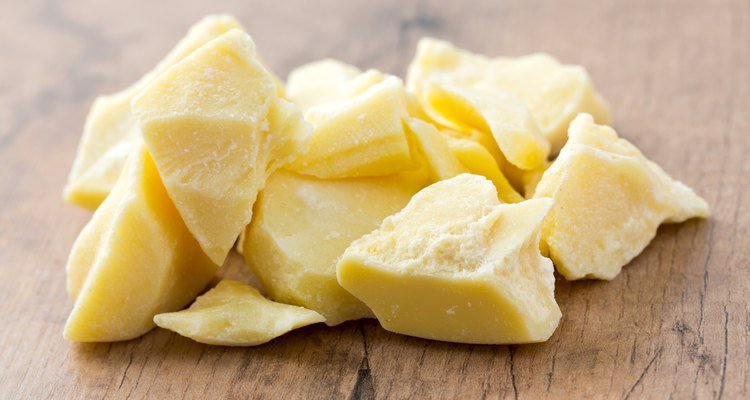
Diana Taliun/iStock/Getty Images
Cocoa butter is a type of fat that comes from the cacao bean. Cocoa butter is most commonly used as a skin care ingredient that moisturizes and prevents dry skin. It's also used as a nourishing ingredient in many summer lotions, sun tanning oils and self tanners. Cocoa butter has a long shelf life of between two to five years, making it a good emollient for higher-heat situations during the summer.
Processing
Cocoa butter forms when beans are roasted from the cacao tree and then pressed to create an aromatic solid. The harvester then mashes the solid to create a buttery paste consistency.The product has an off-white, golden color and a pleasing chocolate scent. Colors, additional scents and packaging offer an enticing product for those who enjoy the scent of cocoa butter and its natural skin-healing properties.
Types
Cocoa butter is a popular ingredient in many summertime products. The butter is an essential ingredient in moisturizing creams and lotions used for dry or sun-exposed skin. Skin butters are a little more thicker in consistency than lotions and are used for an all-over body drenching. Cocoa butter products are used in cosmetics such as moisturizing creams, lip balms, body soaps and face masks. Tanning lotion manufacturers add cocoa butter extract to help sun worshipers achieve moist, flake-free skin while getting their tan.
Care
One of the reasons cocoa butter is used as a summer lotion or skin care product is its high melting point. Generally, it starts melting between 93 degrees Fahrenheit and 100 degrees Fahrenheit. If it's mixed in with other ingredients to form a lotion or liquid consistency, it may start to break down into small crystals. Keeping it out of direct sunlight will help prevent this. Otherwise, cocoa butter retains its smooth consistency even when the temperature rises.
Purchase
You can buy pressed and unrefined extractions of coca butter at organic markets or craft outlets. Most all-natural cocoa butter comes in solid form and should be exposed to room temperature, or carefully heated to allow it to blend or liquefy for personal use.
Benefits
Cocoa butter moisturizes skin, and its aromatic qualities are sought after by those who want to rejuvenate and pamper their skin. Cocoa butter also allows the skin to radiate and replenish, creating a golden quality that shows off darker skin. You can use tanning lotions with cocoa butter before, during and after a tanning session to keep skin from drying out.
Related Articles
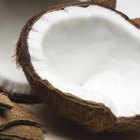
What Is the Difference Between Coconut ...

Vegan Alternatives to Lanolin in ...

What Is Cognac Leather?
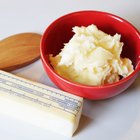
How to Cream Butter Without a Mixer

What Do You Use to Help You Tan in the ...

Jojoba Oil Benefits

Harmful Ingredients in Cocoa Butter

How Many Types of Chocolate Are There?

Which Country Produces the Most ...
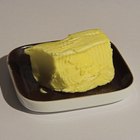
How to Store Ghee

How to Make Beeswax Face Cream

What Is the Benefit of Olive Butter for ...

What Is a Chocolate Pedicure?

Homemade Coconut Pomade

How to Make Roll-On Perfume

What Are the Benefits of Chocolate ...

Are There Benefits of Tanning Oil?
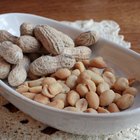
What Is the Shelf Life for Raw Peanuts?
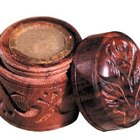
How to Make Amber Butter Perfume

How to Cook Kale in a Pan With Butter ...
References
Resources
Writer Bio
Julie Boehlke is a seasoned copywriter and content creator based in the Great Lakes state. She is a member of the Society of Professional Journalists. Boehlke has more than 10 years of professional writing experience on topics such as health and wellness, green living, gardening, genealogy, finances, relationships, world travel, golf, outdoors and interior decorating. She has also worked in geriatrics and hospice care.
Photo Credits
Diana Taliun/iStock/Getty Images